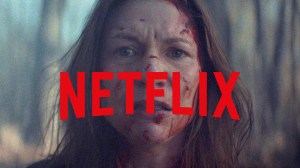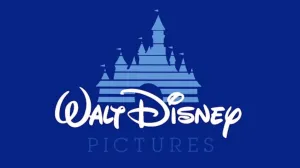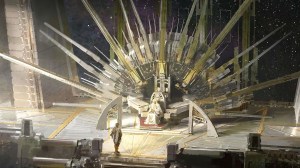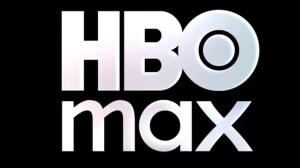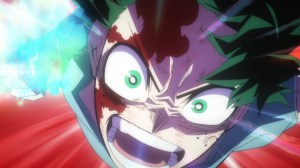If you keep an eye of the screenplay credits on big-budget genre films, you’re about to get a whole lot more familiar with the name Christina Hodson over the next few years, beginning with the latest — and decidedly most transformative — entry in the Transformers franchise, Bumblebee.
Videos by ComicBook.com
The former development executive-turned-screenwriter not only joined the elite writers room assembled by Paramount and Hasbro to put fresh new spins on various elements of the well-established Transformers mythos, she was also granted residence in Gotham City, penning the stories for both the upcoming Margot Robbie-led film Birds of Prey (and the Fantabulous Emancipation of Harley Quinn) and the hush-hush big-screen take on Batgirl.
Hodson says it was her as-yet-unproduced 2014 screenplay for the female-led sci-fi opus The Eden Project that put her on the radar to land her seat in the Transformers writers group. “I got invited to be in the writer’s room in the summer of 2015 and I went into that room knowing I wanted to write the story of a girl and her car,” she tells ComicBook.com. “I had no idea if anyone would have any interest in me doing that, but that’s what I wanted to do, and luckily things aligned and they got excited about my take.”

Her take was informed by her personal history as an ’80s kid who played with her share of beat-up, hand-me-down Transformers toys even before the cartoons were an after school ratings sensation. “I had a real love for playing with the toys,” she remembers, admitting she didn’t start out knowing the film series chapter and verse. “When I got invited to the writer’s room I think I had only seen the first movie at that point, and I was a real fan. It was exciting to kind of come back in and learn all about it, this huge expensive franchise that’s been going on for a long, long time.”
As she crafted a plan to marry her girl-and-her-car concept to the existing Transformers canon, Hodson put aside any thoughts or concerns about specifically adhering to the film universe’s established expectations or purposefully breaking its “rules.”
“Honestly, I tried not to think about the business side of it and the franchise side of it – the producers and the studio were very supportive and I let them worry about that,” she says. “For me it was really about focusing on the characters Charlie and [Bumblebee],” the latter of whom was easily her personal favorite among the established Transformers – and popular enough among fans of the franchise to carry his own solo origin film.
“He is very hard not to love, and of all of the robots, he was pretty much the only one of the Transformers that really has always felt like one of us,” Hodson explains. “He feels like a real kid, almost. He’s got the real sweetness and the playfulness. To me he’s like a kid and an oversized Labrador puppy who doesn’t quite know how big his limbs are and does things that are really endearing. And I love that he’s a total badass. He’s 16 feet – he’s tall, but he’s still a lot smaller than a lot of the other Transformers, and he’s always held his own and always been a really good fighter and a warrior and a soldier. And I love that duality between the two things that he is: both this sweet, gentle soul but also this badass warrior.”

The film zeroes in on the Autobot/Decepticon conflict as it rages in the 1980s, when the valiant warrior version of Bumblebee is wounded and makes his way, voiceless and with his memories scrambled, to Earth for the first time. “He is this vulnerable fish out of water,” she says, noting that the early-era time frame helped dispel countless continuity concerns. “It was really fun to be able to have this bigger canvas where we could focus on just one Transformer and then tell the story of these two characters that start out in the beginning a little broken, and then over the course of the journey their arcs join together and kind of heal one another.”
Charlie, played by Hailee Steinfeld, emerges as just as winning a character as Bumblebee: an alienated teenage gearhead still dealing with the death of her beloved father, who schooled her well in the workings of automobiles though she’s still struggling with more human connections. “She was based on my two nieces,” reveals Hodson. One of the girls “wasn’t really a kid who fit into any box, you couldn’t shop for her in the girls’ aisle, but you also couldn’t shop for her in the boys’ aisle…She was a bit of everything. She was so nuanced and complicated and interesting and I wanted her to grow up in a world where the female heroines she was seeing on screen were more like that.” The other, who lost her mother to illness but formed a close bond with her father, “where she has taken on his love of cars in order to stay close to him and now it is genuinely her own passion…No matter how big the movie got we always had these personal beating hearts.”
Hodson still marvels at the way Steinfeld breathed life into Charlie. “Hailee is amazing,” she says. “Hailee can do so much with not even a line of dialogue. It’s funny – I was on set where she was filming the scene for her job where she is churning the lemon for the lemonade: she is not saying a thing and her eyes say so much. You can feel the longing and the pain and the humiliation – so many different things going on just by her eyes and she was like that every single take. There is no bad take with Hailee Seinfeld, she is just incredible.”
While Bumblebee is hitting theaters at the height of a cultural moment where competent, capable-but-vulnerable female protagonists have been taking center stage in genre storytelling, and Hodson is excited that audiences are ready to embrace such heroines – it was a choice that felt a bit riskier when she first committed to it. “Honestly I did not know if they would have any desire to make this movie when I came up with the pitch – kudos to Paramount and Hasbro for seeing the potential in it before it was the popular thing to do,” she says. “And now it’s wonderful for the to be opening in a world where there seems to be an appetite for it. And movies take time to make! if we had only started now, we’d have to wait a long time, so it’s exciting and very gratifying as a writer.”

